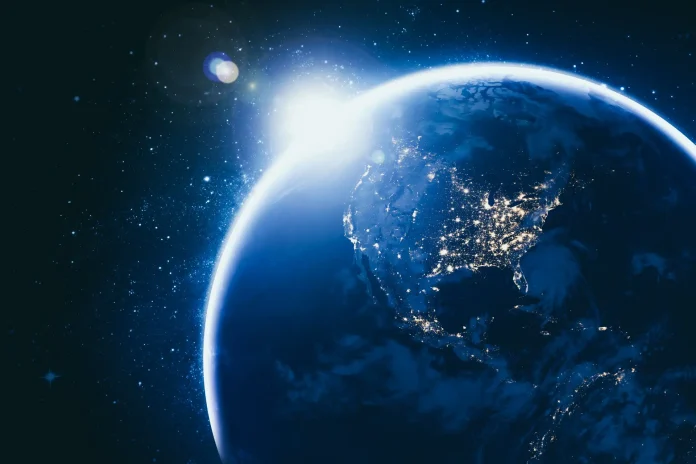As we gaze at the star-dusted field of the night sky, a new constellation is emerging – one not of shining celestial bodies but of vigilant AI satellite, unfolding a protective mantle around our planet. These Earth observation sentinels, armed with advanced sensors and fueled by the innovation of artificial intelligence, hold the key to unlocking a treasure box of data, promising a revolutionary leap in our understanding and protection of the environment.
From Cold War Gaze to Climate Guardians
With nearly 1,200 satellites orbiting Earth, capturing data on everything from deforestation scars to the Earth’s pulse in the form of temperature fluctuations, the Earth observation industry is a constellation in its own right. But for decades, Earth observation satellites primarily served the needs of national security, their watchful eyes trained on military movements and global intelligence gathering. But now, a vital shift is starting in the face of an existential threat like climate change. Once covered in secrecy, the industry now sees expanding potential in climate-focused customers – businesses, NGOs, and policymakers alike who recognize the transformative power of this AI satellite data stream.
AI Satellite is the Master Key to the Data Vault
This significant change is fueled by a growing awareness of the critical role satellites play in understanding and addressing climate change. The World Economic Forum’s 2021 paper, “Space for Net Zero,” served as a clear call, highlighting this important connection and paving the way for discussions like the recent Davos panel on unlocking the potential of AI satellite data. While vast and invaluable, the raw data captured by satellites remains locked away in its raw form. Hence, to extract this data, AI can be used as the master key to unlock the hidden potential within.
Advanced machine learning algorithms shift through gigabytes of satellite imagery, deciphering the delicate stories etched in pixels. Imagine forests whispering tales of deforestation, farmlands revealing secrets of optimal water usage, and plumes of industrial chimneys admitting their greenhouse gas sins – all laid open to the sharp eyes of AI satellite.
A Glimpse of a Greener Future with AI Satellite
Companies like Deloitte see AI as the master of this data extraction. This conductor can transform the raw notes of satellite imagery into actionable melodies for a greener future with AI satellite. By deploying AI and machine learning algorithms, we can automate the process of extracting insights from this vast data ocean, enabling applications that can:
- Become forest sentinels: AI satellite can help tracking deforestation and illegal logging in real-time, ensuring our emerald lungs remain healthy.
- Guide precision agriculture: Optimizing water usage and crop yields by monitoring soil moisture and health and promoting sustainable food production can be the optimal role of AI satellite.
- Validate ESG claims: It can provide objective data to verify companies’ environmental, social, and governance commitments, ensuring transparency and accountability.
- Track emissions with laser precision: Pinpointing sources of greenhouse gasses and monitoring progress towards emission reduction targets, guiding us towards a cleaner future.
Beyond AI Satellite
The potential of AI satellite data extends far beyond the readily imaginable. Think of methane, a potent greenhouse gas, its invisible emissions previously hidden in mystery. Now, satellites equipped with cutting-edge sensors can pinpoint its secret sources, guiding targeted weakening efforts. Tracking the health of coral reefs, the vital nurseries of marine biodiversity, becomes a possibility, allowing us to intervene before these vibrant ecosystems fade into memory.
Building the Gap Between Data and Action
This transformative potential, however, depends on a delicate bond of collaboration. Data providers, like private satellite companies and government agencies, must join hands with AI experts and end users – businesses, policymakers, and environmental NGOs. Closing the gap between raw data and actionable insights requires user-friendly tools that translate the complex language of AI into real solutions for businesses and governments.
As Brett Loubert from Deloitte says, “The time is now to be having these conversations.” In an era where the climate crisis demands immediate action, unlocking the power of AI satellite data is not just an option; it’s a necessity. Exposing more people to their potential, promoting collaboration, and developing accessible tools – these are the cornerstones on which we can build a more sustainable future.



